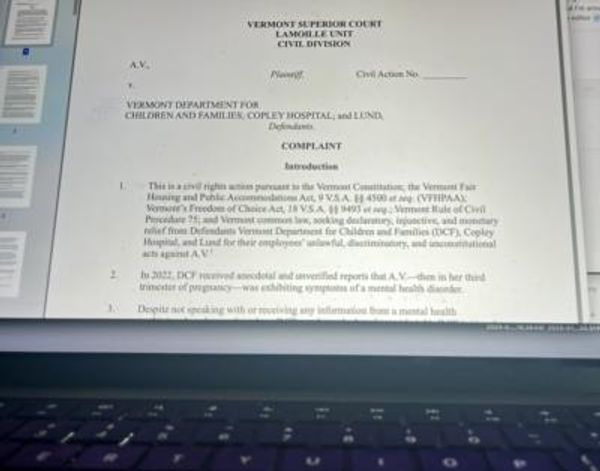
For weeks of lockdown in the UK and beyond, people took part in nightly applause for healthcare staff and carers. Many expressed gratitude for other frontline workers: waste management workers, bus drivers, retail employees and others performing services that were deemed “essential” to a functioning society.
Despite this, many organisations reported an increase of violence and aggression against staff.
Work-related violence refers to abuse, threats or assault against a person doing their job. It can include physical acts, like hitting or spitting, but also verbal abuse such as threatening and yelling. It can occur in person, online, or over the telephone.
Along with Nadja Dörflinger and Jonas Wehrmann from Germany’s Federal Institute of Occupational Health and Safety we at Alliance Manchester Business School researched workplace violence against frontline workers between 2020 and 2022.
We wanted to understand the nature of this violence, its causes, the consequences, and what employers can do to reduce incidents. In our ongoing UK study, we interviewed managers and health and safety representatives from organisations including local government, social care, retail and waste management. The team in Germany interviewed workers, managers, employee representatives and experts in retail, hospitality, public services, care, consulting and policing. Our parallel studies yielded very similar results.

According to the UK union representing retail, food manufacturing and other service workers, nearly three-quarters of retail workers reported experiencing abuse in 2022, compared to just over half in 2016.
A 2019 EU survey showed that 59% of participating companies in the EU reported incidents with “difficult customers” as the biggest risk factor in work. According to our findings, the UK (68%) and Germany (65%) exceeded this number during the height of the pandemic.
Not only is workplace violence occurring at a high rate, but our findings show the nature of violence changed during the pandemic. People we interviewed shared stories of new behaviours, such as customers spitting or coughing on workers. Such acts were very rare prior to COVID, but were weaponised as public health advice highlighted their dangers.
The impact of violence and aggression
Research shows that targets of workplace violence report greater stress, physical health problems and job dissatisfaction. Mistreated workers are more likely to underperform and leave their jobs, which can be costly for employers.
Our findings suggest that verbal abuse had a stronger effect on workers than experiencing physical abuse. Interviews from Germany and the UK described a “drip” effect where smaller, frequent incidents add up over time and can put immense strain on workers.
Workplace violence can have profoundly negative effects on one’s life outside work. One UK health and safety manager described how some employees who live in smaller communities are afraid of coming across their perpetrators in public.
Why the pandemic led to more violence
Dealing with stressors drains one’s limited physical and mental energy. The pandemic was a sustained, stressful event, and research shows that lockdowns negatively affected people’s mental and physical health.
People are more likely to engage in harmful behaviours if they feel like they don’t have the resources to successfully address stressors. As people used their mental energy to adapt to changes like wearing masks and social distancing, they had fewer resources to confront new challenges.
You might remember the experience of being denied entry into a shop because of capacity constraints. While, in other circumstances, this may be seen as an inconvenience, during lockdown you may also have been worried about homeschooling your children, losing work and experiencing health anxiety over contracting COVID. The shop’s rules may have been the final straw leading to an overload of stress and anger – which some people, unable to regulate their emotions, might display in an outburst or aggressive behaviour.
In Germany, we found that frontline workers were often the enforcers of an ever-growing list of rules, such as wearing face masks, following social distancing and checking vaccine certificates. As the “messenger” of these rules, workers became the target of customers’ stress.
Barriers to reporting
If employees do not report their experiences of violence, it is difficult for employers to understand the nature of incidents or how to support their workers. But our research participants – both employees and managers – described barriers to reporting.
Certain work cultures normalise verbal violence as “part of the job”. This was the case in the hospitality industry in Germany, and particularly for female staff. Women often had to cope with a culture in which sexually offensive comments from guests were normalised and expected to be tolerated.
Some may also find it difficult to report verbal abuse. While physical violence can leave visible injuries, and most people would consider it harmful, words are subjective. Workers may worry about not being believed or seen as difficult for reporting verbal abuse.
Both workers and managers shared other challenges with the actual reporting tools, which can be complex and time-consuming to use, especially for workers with lower levels of tech literacy. And even when data and reports are collected, organisations often don’t have the resources or expertise to analyse the data. Health and safety managers in UK organisations spoke of reports sitting in hard drives for years.
While there is only so much organisations can do to end workplace violence, our findings can help employers understand how their workers may have been affected, and how to support them in future incidents.
The authors do not work for, consult, own shares in or receive funding from any company or organization that would benefit from this article, and have disclosed no relevant affiliations beyond their academic appointment.
This article was originally published on The Conversation. Read the original article.







